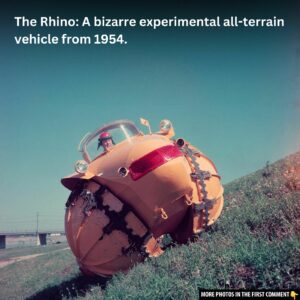In the 1950s and 1960s, small sports car manufacturers and coachbuilders proliferated, but even the larger, more industrialized companies joined the race, often employing the same people who worked for the smaller operations. Prototypes, limited-production re-bodies, and specialty cars served as a way to probe the consumer market, experiment with new motorsport projects, and sometimes achieve both goals. One such vehicle, the Alfa Romeo Giulietta Spider “750G,” is an incredibly rare and uniquely significant creation that recently reemerged from restoration after being lost to time.
Discovering the Rare Alfa Romeo Giulietta 750G ‘Sebring’
This particular Alfa Romeo Giulietta Spider 750G stands as one of the rarest versions of the original Giulietta, with only about 24 units ever produced by the factory in this special specification. Now, only an estimated dozen remain. The car was rediscovered in Portugal in late 2017, in a deteriorated condition after spending decades in neglect. Despite its sad state, its rarity and importance warranted a meticulous restoration by the historic motorsport preservation specialists at Scuderia Del Portello. The Giulietta 750G ‘Sebring’ not only carries immense historical value but is a testament to Alfa Romeo’s racing heritage.

Video
Watch this video to see the Alfa Romeo Giulietta Sprint driving in stereo, showcasing its unique sound and performance!
The Origins of the Giulietta Spider and Its Journey to the U.S. Market
In the mid-1950s, Max Hoffman, the well-known Alfa Romeo importer for the United States, approached the Milanese automaker with a request to produce a convertible version of the Giulietta Sprint coupé. The idea was to capitalize on the growing interest in open-top sports cars in North America, a market already familiar with the allure of European roadsters. Alfa Romeo responded by contracting the design and production work to Pininfarina, marking the coachbuilder’s first large-scale production project.
Hoffman committed to buying 2,500 units for the North American market, ensuring that the Giulietta Spider would have a solid foothold. However, to further excite American enthusiasts, Hoffman also suggested creating a racing version of the Spider, designed specifically for competitive motorsport.

Alfa Romeo’s Racing Ambitions with the Giulietta Spider ‘750G’
The Giulietta Spider 750G was designed not only for street driving but also to make an impact on the racetrack. In response to Hoffman’s request, Alfa Romeo went one step further by modifying three cars for endurance racing, with the ultimate goal of competing in the prestigious 12 Hours of Sebring. These modifications included aerodynamically tuned body panels, a streamlined plexiglass windscreen, and the removal of unnecessary weight, such as aluminum doors and a reinforced chassis to withstand the demands of racing.
Although two of the Sebring-bound cars were shipped to the United States, the third remained in Italy, where it was raced by Alfa’s test driver, Consalvo Sanesi. Sanesi participated in the Giro di Sicilia and the Mille Miglia, but sadly, the car was destroyed in a serious accident during the latter race, halting further development and participation in competitive events.

Endurance Racing and the Short-Lived Career of the 750G ‘Sebring’
Despite the setback at Sebring, the 750G still had a racing career in the United States. Throughout 1957 and 1958, it competed in the SCCA and various regional sports car championships across the country. However, as the 1960s progressed, the car’s competitive presence faded, and its records went dark after 1965.
It wasn’t until the late 2010s that a tip led to the rediscovery of one of the remaining 750G cars in Portugal, where it had been hidden away in a deteriorated state. Although in poor condition, this rare Alfa Romeo was too significant to simply be left to decay.

Restoring a Piece of Automotive History
Thanks to the expertise of Scuderia Del Portello and the close relationship they maintain with Alfa Romeo, the Giulietta 750G ‘Sebring’ was brought back to life. The restoration team painstakingly worked to return the car to its original glory, employing the same meticulous techniques used in motorsport preservation. This included utilizing parts from Alfa Romeo’s own museum and circuit in Arese, Italy.
This Alfa Romeo’s restoration not only highlights the timeless beauty and significance of the Giulietta 750G but also serves as a reminder of the brand’s deep connection to motorsport and its legacy in the racing world. The 750G’s story, from its racing roots to its rediscovery and eventual restoration, is an enduring symbol of Alfa Romeo’s commitment to performance and craftsmanship.

Conclusion: A Rare and Precious Gem in Alfa Romeo’s History
The Alfa Romeo Giulietta 750G ‘Sebring’ is more than just a rare sports car—it is a piece of automotive history. Its journey from a factory creation to an endurance racing contender, followed by decades of obscurity and eventual restoration, is a testament to the legacy of Alfa Romeo and the passion of those who have cared for it over the years. With only a handful of examples still in existence, the Giulietta 750G stands as one of the most coveted and celebrated models in the marque’s storied past. Its re-emergence serves as a reminder of the rich history of European sports cars and their enduring impact on the world of motorsport.
Video
Watch this video to see the restoration process of the 1959 Alfa Romeo Giulietta SV, bringing this classic car back to life!



